Home>Storage Ideas>Kitchen Storage>How To Declutter A Small Kitchen: 10 Expert-approved Tips
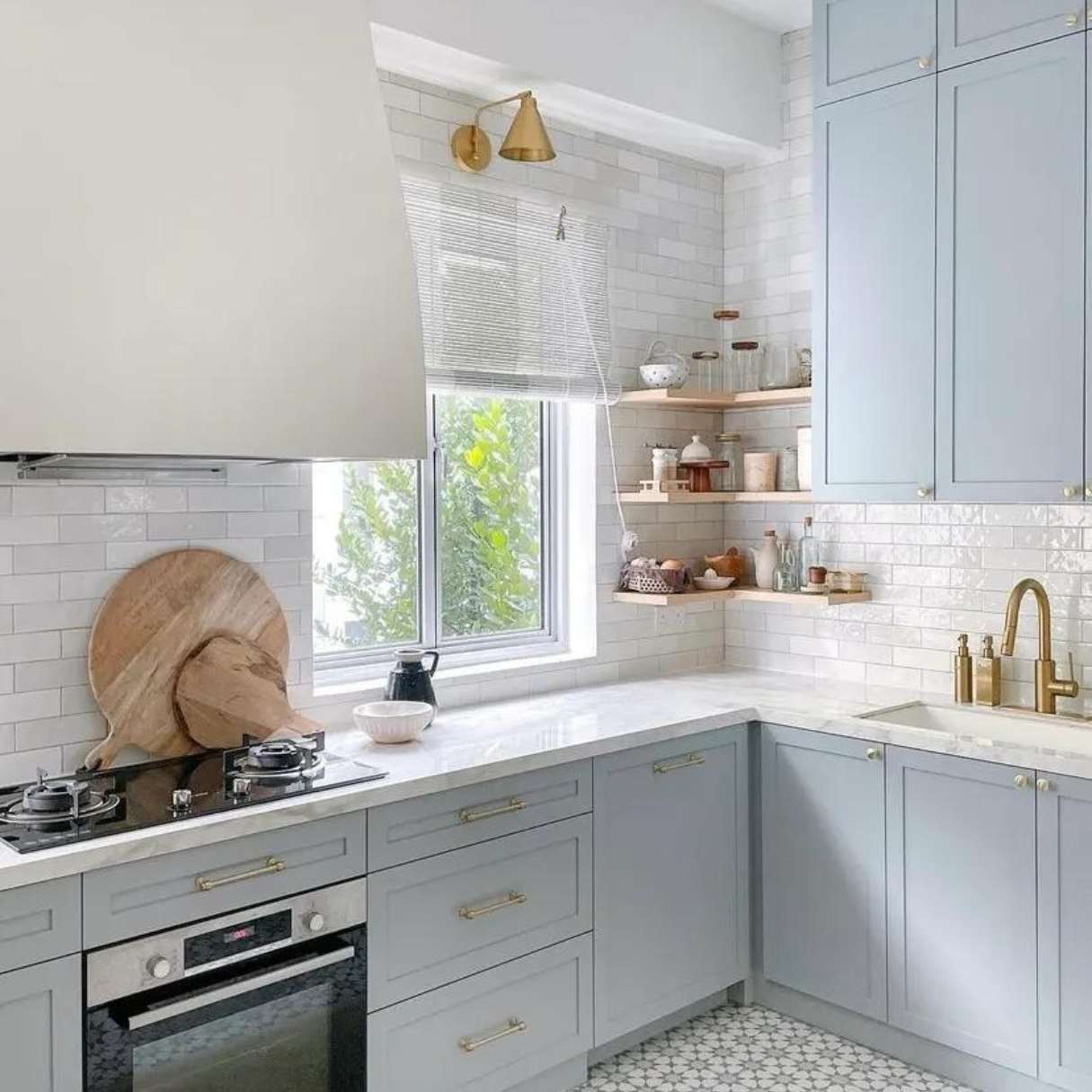

Kitchen Storage
How To Declutter A Small Kitchen: 10 Expert-approved Tips
Modified: October 20, 2024
Learn how to declutter your small kitchen with these 10 expert-approved kitchen storage ideas. Maximize space and organization in your kitchen today!
(Many of the links in this article redirect to a specific reviewed product. Your purchase of these products through affiliate links helps to generate commission for Storables.com, at no extra cost. Learn more)
How to Declutter a Small Kitchen: 10 Expert-Approved Tips
Maintaining an organized and clutter-free kitchen can be a challenge, especially when dealing with limited space. A small kitchen can easily become overwhelmed with appliances, utensils, and groceries, making it difficult to find what you need and work efficiently. With the help of these expert-approved tips, you can declutter your small kitchen and create a functional and inviting space.
1. Assess Your Space: Before you begin decluttering, take a moment to evaluate your kitchen. Identify areas that are causing the most clutter and make a plan to address them. Consider the layout of your cabinets, countertops, and pantry, and think about how you can optimize each area.
2. Clear Off the Countertops: Clearing off your countertops instantly creates a more spacious and organized look. Remove any unnecessary items and only keep the essentials within reach. Invest in wall-mounted storage solutions like hooks or magnetic strips to hang commonly used utensils and knives.
3. Maximize Cabinet Space: Make the most of your cabinet space by utilizing organizational tools such as stackable shelves, under-shelf baskets, or hanging organizers. Group similar items together and store them in designated areas to avoid unnecessary clutter.
4. Utilize Vertical Storage: If you’re running out of cabinet or countertop space, look upward. Install shelving units or hanging racks on your kitchen walls to take advantage of vertical storage. This will free up valuable space and keep items easily accessible.
5. Organize Your Pantry: A well-organized pantry is crucial for a clutter-free kitchen. Sort through your pantry items and discard any expired or unused items. Invest in clear containers or baskets to store various pantry staples such as grains, spices, and snacks. Labeling them will make it easier to find what you need.
6. Sort and Declutter Utensils: Take stock of your utensil drawer and remove any duplicates or items you rarely use. Invest in a drawer organizer to keep utensils neatly separated and easily accessible. Consider hanging commonly used utensils on a wall-mounted rack to save drawer space.
7. Streamline Your Cookware: Assess your cookware collection and only keep the essentials. Donate or discard any pots or pans that are damaged or rarely used. Consider stackable or nesting cookware sets to save cabinet space.
8. Optimize Refrigerator Space: Keep your refrigerator clutter-free by regularly purging expired items and organizing food by categories. Use clear bins or storage containers to group similar items together and maximize space. Place frequently used items at eye-level for easy access.
9. Create a Cleaning Routine: Establish a regular cleaning routine to maintain a clutter-free kitchen. Wipe down surfaces, wash dishes promptly, and put away ingredients and utensils after use. Taking a few minutes each day to clean up will prevent clutter from piling up.
10. Maintain the Clutter-Free Zone: Once you have decluttered and organized your small kitchen, make it a habit to maintain the clutter-free zone. Put things back in their designated places after use and resist the temptation to accumulate unnecessary items.
By implementing these expert-approved tips, you can transform your small kitchen into a functional and organized space. Remember, decluttering is an ongoing process, so make it a priority to regularly assess and maintain your kitchen to keep it clutter-free. With a little effort and organization, you’ll enjoy a more efficient and enjoyable cooking experience.
Key Takeaways:
- Decluttering a small kitchen requires assessing space, clearing countertops, maximizing cabinets, and utilizing vertical storage. Regular maintenance and a cleaning routine are essential for a clutter-free kitchen.
- Maintaining a clutter-free kitchen involves putting items back in their designated places, avoiding impulse purchases, and practicing the “one in, one out” rule. Get the whole family involved and focus on quality over quantity for an organized and efficient space.
Assess Your Space
When decluttering a small kitchen, it’s essential to start by assessing your space and understanding its limitations. Take some time to evaluate the layout, storage options, and overall functionality of your kitchen. This will help you identify specific areas that need improvement and plan your decluttering strategy accordingly.
Begin by examining the cabinets and countertops. Are they being utilized effectively, or is there wasted space? Take note of any areas where clutter tends to accumulate, such as a crowded countertop or disorganized cabinet.
Next, consider the flow of your kitchen. Is it easy to navigate and access frequently used items, or do you find yourself constantly searching for what you need? Understanding how you use your kitchen on a day-to-day basis will help you determine the most efficient organization and storage solutions.
Once you have a clear picture of your kitchen’s layout and any problem areas, it’s time to develop a plan. Identify your goals for decluttering and prioritize the areas that require the most attention. Set realistic expectations and create a timeline that works for you.
For example, if you know that your countertops are constantly cluttered, focus on finding effective ways to clear and organize that space. If your cabinets are overflowing and becoming a jumble of items, tackle one cabinet at a time and consider implementing storage solutions that maximize the available space.
Additionally, decide on your desired level of minimalism. While decluttering is important, it’s essential to strike a balance between function and personal preference. Some people prefer a minimalist kitchen with only the bare essentials, while others may enjoy having a few decorative items on display.
Remember that decluttering is not about completely eliminating everything from your kitchen. It’s about creating a space that feels organized, functional, and promotes a sense of calm.
Overall, assessing your space is a crucial first step in the decluttering process. By understanding the layout and limitations of your small kitchen, you can develop an effective strategy to declutter and organize it in a way that best suits your needs. So grab a notepad, walk through your kitchen, and take note of any areas that need improvement. This will set you on the path to creating a beautifully organized and clutter-free kitchen.
Clear Off the Countertops
Clearing off your countertops is a key step in decluttering a small kitchen and creating a clean and functional space. When countertops are cluttered, it not only makes your kitchen look messy, but it also reduces your workspace when preparing meals. Here are some expert-approved tips to help you clear off your countertops and make the most of your small kitchen:
1. Determine essentials: Start by identifying the essential items that you use on a daily basis. These may include your coffee maker, toaster, or knife block. Keep these items on the countertop for easy access.
2. Evaluate the rest: Take a critical look at the remaining items on your countertops. Are they truly necessary, or are they taking up valuable space? Be ruthless in decluttering and remove any items that you rarely use or that can be stored elsewhere.
3. Find designated storage spots: Assign specific storage spots for items that you don’t use regularly but still need to keep. This could be a designated cabinet, pantry, or even a drawer. Make sure these spots are easily accessible but out of sight to maintain a clean countertop.
4. Utilize wall space: If you have limited cabinet space, consider utilizing your kitchen walls to create additional storage. Install shelves, hooks, or pegboards to hang smaller items such as mugs, utensils, or spices. This not only clears off your countertops but also adds a decorative touch to your kitchen.
5. Get creative with storage solutions: Invest in space-saving storage solutions that can help you declutter your countertops. There are various options available, such as stackable storage containers, hanging fruit baskets, or magnetic strips for knives. These solutions free up counter space while keeping your items easily accessible.
6. Create a daily routine: Establish a routine where you take a few minutes each day to put away items that have found their way onto the countertops. Assign a “home” for everything, and make it a habit to return items to their designated spots after use. This will help prevent clutter from accumulating in the future.
7. Prioritize functionality: When decluttering, prioritize functionality over aesthetics. While it’s nice to have decorative items in your kitchen, make sure they don’t crowd your countertops and impede your cooking activities. Opt for functional items that serve a purpose while still adding a touch of style to your space.
Clearing off your countertops in a small kitchen not only creates a visually appealing and organized space but also provides you with more room to work and prepare meals. By evaluating the items on your countertops, finding designated storage spots, and utilizing creative storage solutions, you can achieve a clutter-free and functional kitchen that makes cooking a pleasure. So roll up your sleeves, start decluttering, and enjoy the benefits of a clear and spacious countertop.
Maximize Cabinet Space
In a small kitchen, cabinet space is precious. Maximizing your cabinet space is essential for decluttering and creating a well-organized kitchen. Here are 10 expert-approved tips to help you make the most of your cabinet space:
1. Declutter first: Before organizing your cabinets, take the time to declutter. Remove any items that you no longer use, are expired, or are duplicates. This will create more space and help you prioritize what needs to be stored.
2. Use cabinet organizers: Invest in cabinet organizers to maximize your storage space. These can include stackable shelves, spice racks, or under-shelf baskets. Utilizing these organizers will allow you to efficiently group items and easily access them when needed.
3. Adjust shelves: If your cabinet shelves are adjustable, take advantage of this feature. Adjust the shelves to fit the height of the items you’re storing. This will eliminate wasted space and ensure that your cabinets are fully utilized.
4. Utilize the inside of cabinet doors: The inside of cabinet doors is often forgotten real estate. Consider installing hooks or hanging organizers on the inside of your cabinet doors to hang measuring spoons, oven mitts, or small utensils. This not only saves space but also keeps items easily accessible.
5. Stack cookware and bakeware: Stackable cookware and bakeware will save valuable cabinet space. Opt for nesting pots, pans, and mixing bowls that can be easily stacked together. This will free up space for other items and make your cabinet more organized.
6. Store items by frequency of use: Organize your cabinets based on how frequently you use items. Place everyday items like plates, cups, and bowls in easily accessible cabinets. Store less frequently used items, such as specialty cookware or serving dishes, in harder-to-reach cabinets or higher shelves.
7. Utilize the top of cabinets: If you have space above your cabinets, use it wisely. Place storage baskets or decorative items on top of the cabinets to store lesser-used appliances, extra dishware, or seasonal items. Be sure to keep these items organized and dust-free.
8. Utilize corners: Corners in cabinets can be tricky to access and often lead to wasted space. Install lazy susans or use corner shelf units to make the most of these areas. This allows you to easily access items stored in corners without having to reach deep into the cabinet.
9. Group similar items together: Grouping similar items together will help to maximize your cabinet space. Store baking ingredients and supplies together, keep all your spices in one place, and dedicate a cabinet for your coffee or tea accessories. This not only keeps items organized but also makes it easier to find what you need.
10. Regularly reassess and reorganize: Finally, remember to regularly reassess and reorganize your cabinets. As your needs change and your cooking habits evolve, it’s important to make adjustments to your cabinet organization. Take a few minutes every few months to reevaluate and make any necessary changes to optimize your cabinet space.
Maximizing your cabinet space is crucial for achieving a clutter-free and well-organized small kitchen. By decluttering, utilizing cabinet organizers, adjusting shelves, and making the most of every inch of space, you can create a kitchen that is both functional and efficient. So roll up your sleeves, tackle your cabinets, and enjoy the benefits of a neatly organized and maximized kitchen space.
Utilize Vertical Storage
Maximizing vertical storage is an excellent strategy for decluttering a small kitchen. When you have limited floor and counter space, utilizing the vertical areas of your kitchen can help create additional storage options. Here are 10 expert-approved tips to make the most of vertical storage:
1. Install shelving units: Adding vertical shelving units is a great way to maximize storage in your small kitchen. Install floating shelves or wall-mounted shelves on empty walls or above countertops. Use them to display decorative items or store frequently used items like plates, cups, or spices.
2. Hang pots and pans: Hanging your pots and pans not only frees up valuable cabinet space but also adds a stylish and functional element to your kitchen. Install a sturdy pot rack or use hooks to hang your cookware. This makes it easily accessible while adding visual interest to the space.
3. Utilize the space above cabinets: The space above your kitchen cabinets is often overlooked but can be utilized for additional storage. Place decorative baskets or bins on top of the cabinets to store items like cookbooks, serving platters, or small appliances that you don’t use regularly.
4. Hang a pegboard: Pegboards are versatile and can transform a blank wall into a practical storage solution. Hang a pegboard and use hooks to hang cooking utensils, measuring cups, and other frequently used kitchen tools. This keeps them within reach while freeing up drawer space.
5. Invest in magnetic strips: Mount magnetic strips on empty walls or the inside of cabinet doors to store knives, kitchen scissors, and metal utensils. This not only keeps them organized and easily accessible but also creates more drawer space for other items.
6. Use tension rods: Tension rods are not just for curtains! Install tension rods vertically inside cabinets or under sinks to create additional storage options. Hang cleaning supplies, cutting boards, or pot lids on the rods to keep them organized and easily accessible.
7. Choose tall pantry storage: If you have a pantry in your small kitchen, make the most of the vertical space by incorporating tall pantry storage solutions. Install adjustable shelves or invest in stackable storage containers to use the full height of the pantry.
8. Add a hanging fruit basket: Instead of using valuable countertop space for fruit storage, opt for a hanging fruit basket. Hang it from the ceiling or under a cabinet to keep your fruits easily visible and accessible while freeing up counter space.
9. Utilize the sides of cabinets: Attach hooks or racks to the sides of your tall cabinets to hang oven mitts, aprons, or kitchen towels. This takes advantage of otherwise unused space and keeps these items within reach.
10. Consider a hanging shelf system: A hanging shelf system can be a practical and stylish addition to your small kitchen. Install a hanging shelf unit from the ceiling or a sturdy rod to store items like mugs, glasses, or small plants. This creates a unique display while maximizing vertical space.
By utilizing vertical storage options in your small kitchen, you can make the most of every inch of space. Whether it’s installing shelves, hanging pots and pans, or using magnetic strips, these tips will help you declutter and create an organized kitchen. So think vertically, get creative, and enjoy the benefits of a clutter-free and efficiently utilized kitchen space.
Read more: How To Declutter A Small Apartment
Organize Your Pantry
Organizing your pantry is crucial for maintaining a clutter-free and functional small kitchen. A well-organized pantry makes it easier to locate ingredients, prevents food waste, and maximizes storage space. Here are 10 expert-approved tips to help you organize your pantry:
1. Declutter and categorize: Start by decluttering your pantry. Remove any expired or unused items, and donate non-perishable items that you won’t use. Next, categorize your remaining items into groups, such as grains, canned goods, snacks, or baking supplies.
2. Invest in storage containers: Clear storage containers are a game-changer for pantry organization. Transfer items like cereal, pasta, or flour into airtight containers to keep them fresh and easily visible. Use labeled containers to create a uniform look and make it easier to locate specific items.
3. Use bins or baskets: Utilize bins or baskets on your pantry shelves to group similar items together. This keeps everything organized and prevents smaller items from getting lost. For example, use a bin for snack bars or a basket for spices and seasoning packets.
4. Establish zones: Assign zones within your pantry for different categories of items. Create a designated space for baking ingredients, canned goods, snacks, and so on. This way, everything has its place, and you can easily find what you need without rummaging through the entire pantry.
5. Arrange items by accessibility: Place frequently used items at eye level or within easy reach. Reserve higher or lower shelves for items you don’t use as often. This simple arrangement ensures that you can quickly grab what you need without having to search extensively.
6. Utilize the door space: Make use of the space on the inside of your pantry door. Attach an over-the-door organizer or hooks to hang small items such as measuring spoons, oven mitts, or kitchen towels. This optimizes space and keeps these items easily accessible.
7. Label everything: Labeling is key when it comes to organizing your pantry. Label containers, baskets, and shelves to ensure that everything is returned to its proper place. This helps prevent items from being misplaced and makes it easier for others to locate items as well.
8. Utilize risers or shelf organizers: If space permits, consider using risers or shelf organizers to create additional storage space in your pantry. These can double the usable surface area and make it easier to see and reach items stored at the back of shelves.
9. Rotate your stock: Prevent food waste by practicing the “first in, first out” rule. When organizing your pantry, place newer items at the back and older items at the front. This ensures that older items get used first and reduces the chances of forgotten or expired items.
10. Regular maintenance: Keep your pantry organized by regularly maintaining it. Take some time every few months to declutter, clean, and reorganize your pantry. This way, you can stay on top of any expired items, adjust storage options as needed, and maintain an organized space.
An organized pantry not only enhances the functionality of your small kitchen but also creates a visually appealing space. By decluttering, categorizing, investing in storage containers, and maintaining an organized system, you can transform your pantry into an efficient and clutter-free area. So roll up your sleeves, tackle your pantry, and enjoy the benefits of a well-organized kitchen space.
Utilize vertical space by installing shelves or hooks to store pots, pans, and utensils, freeing up valuable counter and cabinet space in a small kitchen.
Sort and Declutter Utensils
Sorting and decluttering your utensils is a crucial step in creating an organized and efficient small kitchen. Having a streamlined collection of utensils not only makes it easier to find what you need but also frees up drawer space for other essentials. Here are 10 expert-approved tips to help you sort and declutter your utensils:
1. Empty the drawer: Start by emptying out your utensil drawer completely. This will allow you to see all your utensils and assess the space available.
2. Categorize your utensils: Sort your utensils into categories, such as cooking utensils, serving utensils, baking tools, and cutlery. This will help you identify any duplicates or rarely used items.
3. Assess functionality: Evaluate the functionality of each utensil. Consider whether you use it regularly, if it serves a specific purpose, or if it can be replaced by a multi-purpose tool. Let go of items that are broken, damaged, or no longer useful.
4. Donate or sell: For utensils that are in good condition but no longer serve a purpose in your kitchen, consider donating them to a local charity or selling them online. This allows someone else to benefit from them and helps declutter your space.
5. Invest in a utensil organizer: Purchase a utensil organizer that fits your drawer size and style. This will ensure that your utensils are neatly separated and easily accessible. Look for one with dividers or compartments to keep different utensils organized.
6. Stick to the essentials: When deciding which utensils to keep, stick to the essentials that you use regularly. This may include a spatula, whisk, tongs, and a few versatile knives. Avoid hoarding uncommon or specialized utensils that are rarely used.
7. Hang frequently used utensils: If drawer space is limited, consider hanging your most commonly used utensils on a wall-mounted rack or hooks. This not only frees up drawer space but also adds a decorative touch to your kitchen.
8. Minimize duplicates: Assess if you have multiple utensils serving the same purpose and choose one or two that you prefer using. This reduces clutter and makes it easier to locate the utensil you need.
9. Consider space-saving alternatives: Look for compact and space-saving alternatives for certain utensils. For example, opt for collapsible measuring cups, nesting measuring spoons, or stackable mixing bowls. These options help maximize storage space in your small kitchen.
10. Maintain organization: Once you have decluttered and organized your utensils, make it a habit to maintain the organization. After washing utensils, put them back in their designated spots immediately. Regularly check for any new utensils that need decluttering to prevent the accumulation of unnecessary items.
By sorting and decluttering your utensils, you create a more efficient and organized small kitchen. Streamlining your collection and keeping only the essentials not only saves space but also makes it easier and more enjoyable to prepare meals. So roll up your sleeves, start decluttering those utensil drawers, and embrace the benefits of an organized kitchen space.
Streamline Your Cookware
Streamlining your cookware is essential for decluttering and maximizing the storage space in your small kitchen. With limited cabinet or drawer space, it’s important to keep only the essential and versatile pieces of cookware. Here are 10 expert-approved tips to help you streamline your cookware collection:
1. Assess your needs: Take inventory of your cookware and assess your cooking needs. Consider the types of meals you regularly prepare and the cookware required for those recipes. This will help you determine which pieces are essential and which ones can be decluttered.
2. Keep the essentials: Stick to the essential and versatile pieces of cookware that you use on a regular basis. This typically includes a frying pan, saucepan, stockpot, and a few different sized pots. Discard or donate any cookware that is rarely used or duplicates functions.
3. Invest in multi-purpose cookware: Choose cookware that can perform multiple cooking tasks. For example, opt for a skillet with a lid that can be used for sautéing, frying, or braising. This saves space and eliminates the need for multiple specialized pieces of cookware.
4. Consider stackable or nesting sets: Stackable or nesting cookware sets are ideal for small kitchens as they minimize storage space. These sets allow you to stack pots and pans neatly, reducing the overall footprint in your cabinets.
5. Choose space-saving utensils: Consider investing in space-saving utensils that can be stacked or nested inside each other. This includes collapsible measuring cups, nesting mixing bowls, and utensils with detachable handles. These compact options are convenient and save valuable storage space.
6. Opt for quality over quantity: Invest in high-quality cookware that has superior heat distribution and durability. Quality cookware tends to last longer, reducing the need for frequent replacements and minimizing clutter in your kitchen.
7. Utilize wall-mounted racks: Install wall-mounted racks or hooks to hang your most frequently used pots and pans. This keeps them easily accessible while freeing up cabinet or drawer space.
8. Consider vertical storage solutions: If cabinet or drawer space is limited, consider utilizing vertical storage solutions for your cookware. Install a ceiling-mounted pot rack or a pull-out organizer inside a cabinet to take advantage of vertical space.
9. Store lids efficiently: Lids can take up a lot of space in your kitchen. Consider using lid organizers or racks to store them separately from the cookware. This helps to keep them tidy and easily accessible.
10. Regularly declutter and reorganize: Regularly assess your cookware collection and reevaluate its necessity. As your cooking needs change or if you receive new cookware as gifts, declutter and donate or discard excess items. This ensures that your collection remains streamlined and clutter-free.
By streamlining your cookware collection, you’ll have a well-organized small kitchen that is more functional and efficient. Keep the essentials, invest in multi-purpose options, and focus on space-saving solutions. By regularly reassessing and decluttering your cookware, you’ll maintain a clutter-free cooking space. So, declutter those cabinets, free up valuable storage space, and enjoy the benefits of a streamlined and organized cookware collection.
Optimize Refrigerator Space
Optimizing the space in your refrigerator is crucial for maintaining an organized and efficient small kitchen. By maximizing the available space and organizing your fridge effectively, you can reduce waste, make ingredients easily accessible, and extend the shelf life of your food. Here are 10 expert-approved tips to help you optimize refrigerator space:
1. Declutter and clean: Start by decluttering your refrigerator. Remove expired items and any food that you no longer need or want to consume. Take the opportunity to thoroughly clean the interior of your refrigerator before organizing its contents.
2. Categorize and group items: Categorize your fridge contents into groups such as fruits, vegetables, beverages, dairy, and leftovers. Grouping similar items together makes it easier to find what you need and helps you utilize the space efficiently.
3. Use clear containers and labels: Invest in clear storage containers and labels to keep your refrigerator organized. Place fruits, vegetables, and small items in labeled containers or bins. This not only keeps your ingredients fresh but also makes it easier to grab what you need without having to search through the entire fridge.
4. Utilize door storage: The shelves on the door of your refrigerator are great for storing condiments, jars, and small bottles. Make the most of this space by utilizing door shelves or adding organizers to keep items in place and easily accessible.
5. Prioritize frequently used items: Keep frequently used items, such as milk or commonly used condiments, on the front shelves of your refrigerator where they are easily accessible. This reduces the time spent searching for items and helps keep the fridge organized.
6. Utilize drawer dividers: If your refrigerator has drawers, use dividers to separate different categories of food. This helps keep items organized, prevents cross-contamination, and allows for efficient use of space.
7. Consider stackable storage containers: Invest in stackable storage containers to optimize space on shelves. These containers allow you to stack items vertically, making the most of your available refrigerator space.
8. Utilize the space on top: If your refrigerator has space on top, use it to store items like trays or platters that you don’t use on a regular basis. This ensures that you’re taking advantage of every inch of available space.
9. Label and date leftovers: When storing leftovers, label and date them to help you keep track of their freshness. Place them in clear containers and stack them neatly to maximize space.
10. Regularly reassess and clean: Set aside time once a week to reassess the contents of your refrigerator. Remove any expired or spoiled food and give the shelves a quick wipe-down to maintain a clean and organized fridge.
By optimizing the space in your refrigerator, you can create a well-organized and efficient small kitchen. With a clear system in place, you’ll be able to find ingredients easily, reduce waste, and extend the freshness of your food. So follow these expert-approved tips, declutter your fridge, and enjoy the benefits of an organized refrigerator space.
Create a Cleaning Routine
Creating a cleaning routine is essential for maintaining a clean and clutter-free small kitchen. Regular cleaning not only keeps your kitchen looking its best, but it also contributes to a healthier and more enjoyable cooking environment. Here are 10 expert-approved tips to help you create an effective cleaning routine:
1. Set a schedule: Determine how often you need to clean different areas of your kitchen and create a schedule that works for you. Assign specific tasks for each day, week, or month, depending on the level of cleaning required.
2. Daily upkeep: Incorporate daily cleaning tasks into your routine. This includes wiping down countertops, washing dishes, and sweeping or vacuuming the floor. These small, regular tasks are essential for maintaining a clean and tidy kitchen.
3. Clean as you go: Adopt the habit of cleaning as you go while preparing meals. This means washing utensils and cutting boards as soon as you’re done using them and wiping up spills immediately. This prevents messes from piling up, making your overall cleaning routine more manageable.
4. Disinfect high-touch areas: Regularly disinfect high-touch areas in your kitchen, such as doorknobs, light switches, and appliance handles. This helps to prevent the spread of germs and keeps your kitchen a healthy space.
5. Tackle one area at a time: Divide your kitchen into specific areas and focus on cleaning one area at a time. This prevents overwhelm and ensures that each area gets the attention it needs. For example, one day you can focus on cleaning the refrigerator, and another day on organizing the pantry.
6. Regularly deep clean appliances: Schedule regular deep cleaning sessions for your appliances, such as the oven, microwave, and refrigerator. Follow the manufacturer’s instructions for each appliance to ensure safe and effective cleaning.
7. Clean and maintain small appliances: Pay attention to smaller appliances like the coffee maker, toaster, or blender. Regularly clean these appliances according to their specific cleaning instructions. This not only keeps them functioning properly but also prevents the accumulation of dirt and grime.
8. Wipe down cabinets and countertops: Include wiping down cabinets and countertops in your routine cleaning tasks. Use a gentle cleaner or a mixture of water and mild dish soap to keep these surfaces clean and free from stains or spills.
9. Deep clean the sink: Regularly deep clean your sink to prevent the build-up of grime and bacteria. Use a sink cleaner or a mixture of vinegar and baking soda to remove stains and odors. Scrub the sink with a brush or sponge and rinse thoroughly.
10. Maintain a clean floor: Sweep or vacuum the floor regularly to remove crumbs and debris. Depending on the type of flooring, mop it as needed to keep it clean and free from dirt or spills.
By creating a cleaning routine and sticking to it, you’ll maintain a clean and organized small kitchen. Consistency is key, so make sure to set aside dedicated time for each cleaning task and follow through with your plans. With a clean and clutter-free kitchen, cooking and meal preparation will become more enjoyable and efficient.
Maintain the Clutter-Free Zone
Once you have successfully decluttered and organized your small kitchen, it’s important to maintain the clutter-free zone you’ve created. Consistency is key to enjoying an organized and functional kitchen space. Here are 10 expert-approved tips to help you maintain a clutter-free zone:
1. Put things back in their designated places: After using an item, make it a habit to immediately put it back in its designated spot. Avoid leaving items on countertops, tables, or other surfaces. This simple practice will prevent clutter from accumulating and keep your kitchen organized.
2. Regularly reassess and declutter: Regularly reassess your kitchen items to ensure you are still using and needing everything you have. Donate or discard any items that have become unnecessary or that no longer serve a purpose in your kitchen. This helps prevent clutter from slowly creeping back in.
3. Avoid impulse purchases: Before buying any new kitchen gadgets or appliances, consider if you really need them and have space for them. Avoid impulse purchases that may add to the clutter and take up valuable storage space.
4. Practice the “one in, one out” rule: For every new item you bring into your kitchen, make a commitment to remove one item. Whether it’s a new kitchen tool or a jar of spices, this rule helps you maintain a balanced and clutter-free space.
5. Stay on top of incoming paperwork: Keep a designated spot for your mail, grocery lists, and other paperwork. Regularly sort through and discard any unnecessary paper to prevent it from piling up and adding to the visual clutter in your kitchen.
6. Develop a cleaning routine: As mentioned earlier, establishing a cleaning routine is crucial. Regular cleaning tasks, such as wiping down countertops, cleaning appliances, and sweeping the floor, contribute to maintaining a clutter-free environment.
7. Focus on quality over quantity: When it comes to kitchen items, focus on quality rather than quantity. Invest in durable, high-quality items that will last longer and serve multiple purposes. This approach reduces the need for excessive items and prevents clutter in the long run.
8. Get the whole family involved: Encourage your family members or housemates to be mindful of keeping the kitchen clutter-free. Teach them the importance of putting things away after use and involve them in the decluttering and organizing process.
9. Create designated drop zones: Designate specific areas for everyday items like keys, wallets, and cell phones. By having a designated spot for these items, you reduce the chances of them cluttering your kitchen countertops.
10. Practice minimalism: Embrace a minimalist mindset by appreciating simplicity and functionality in your kitchen. Keep decorations and knick-knacks to a minimum, and focus on creating a space that is practical and conducive to your cooking needs.
By following these tips and maintaining a clutter-free zone in your kitchen, you will enjoy a more organized, efficient, and pleasant cooking experience. Remember, it’s an ongoing process, so stay proactive and make clutter prevention a regular habit. With a clutter-free kitchen, you can fully appreciate the beauty and functionality of your small space.
Frequently Asked Questions about How To Declutter A Small Kitchen: 10 Expert-approved Tips
Was this page helpful?
At Storables.com, we guarantee accurate and reliable information. Our content, validated by Expert Board Contributors, is crafted following stringent Editorial Policies. We're committed to providing you with well-researched, expert-backed insights for all your informational needs.
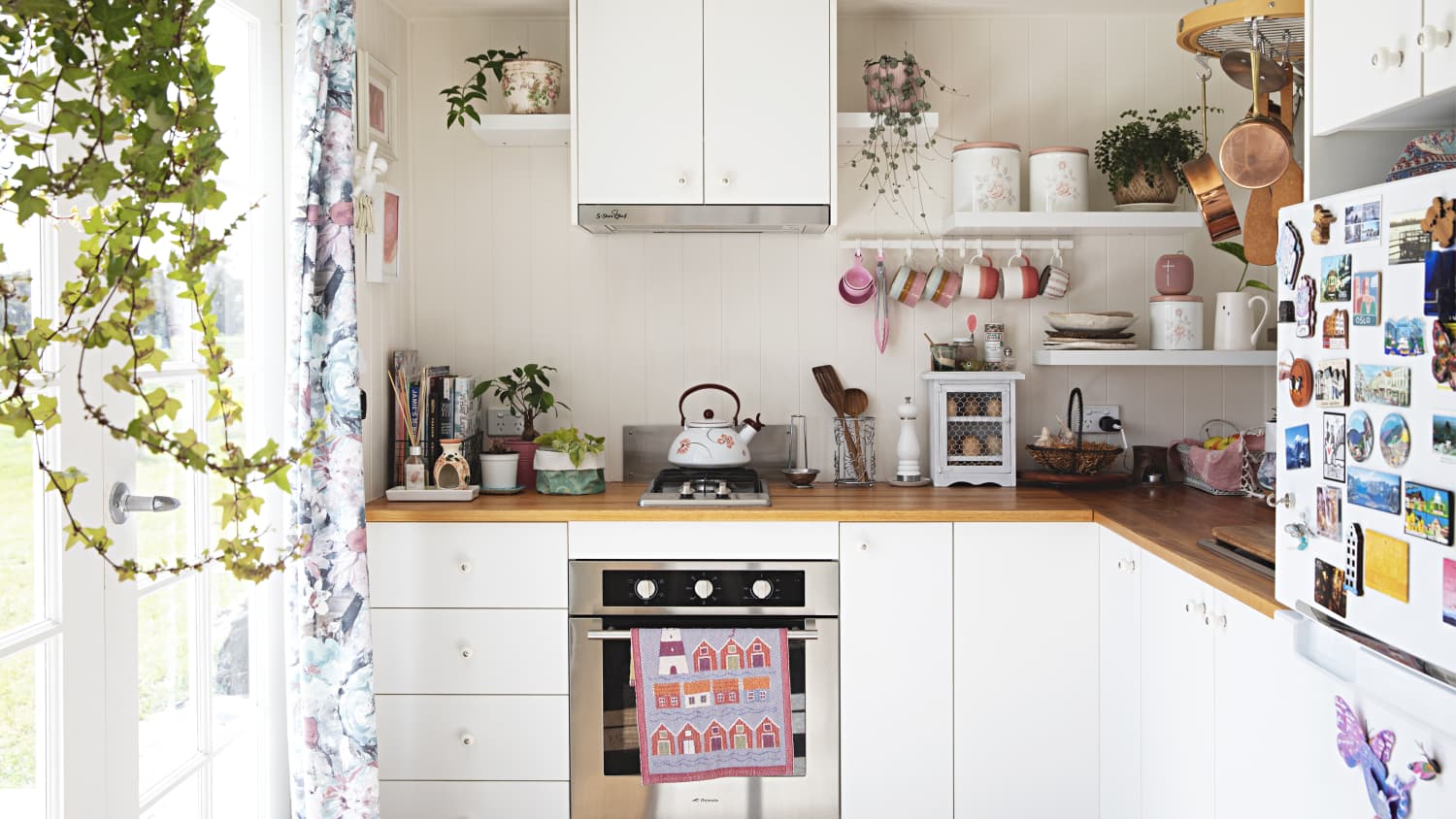

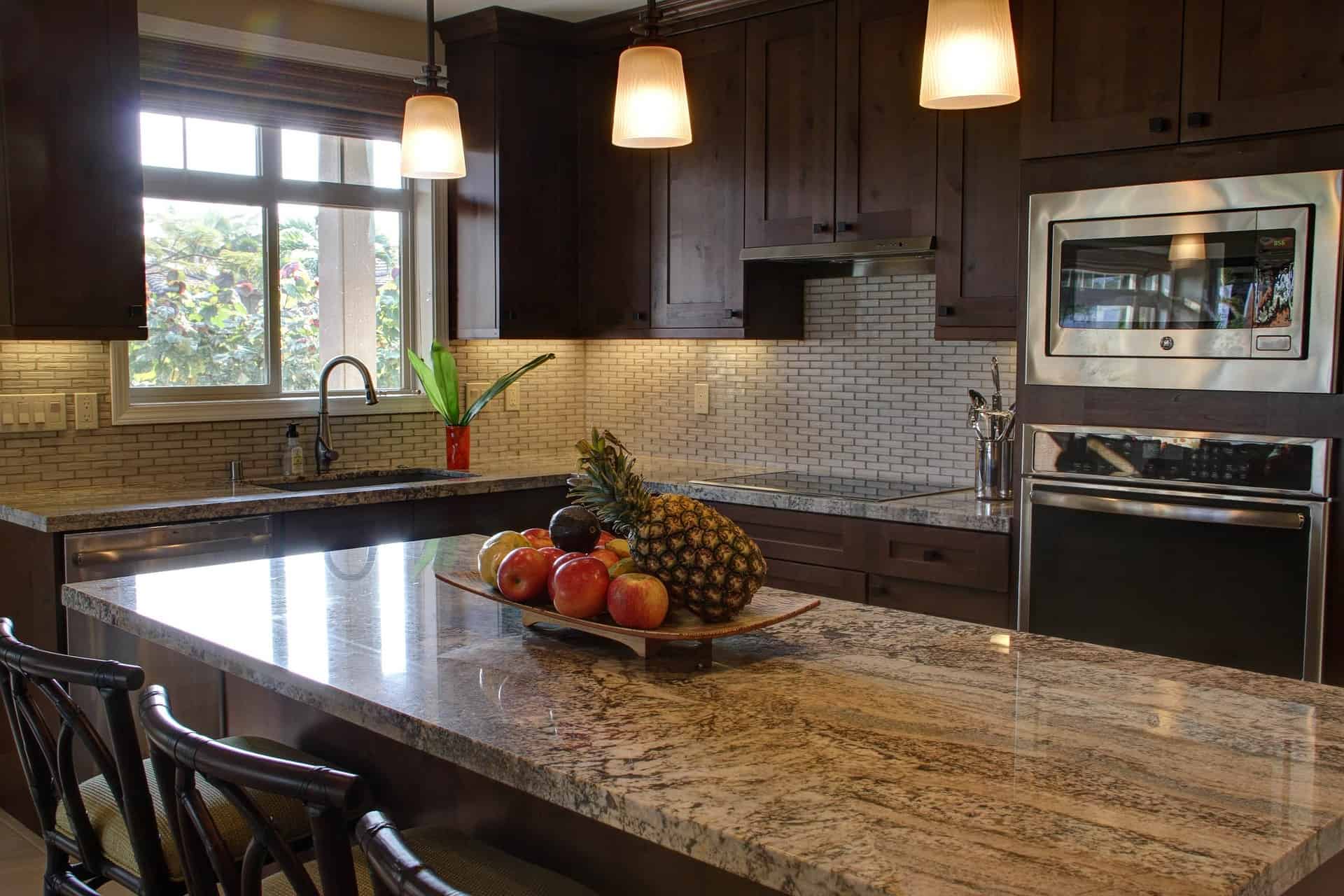
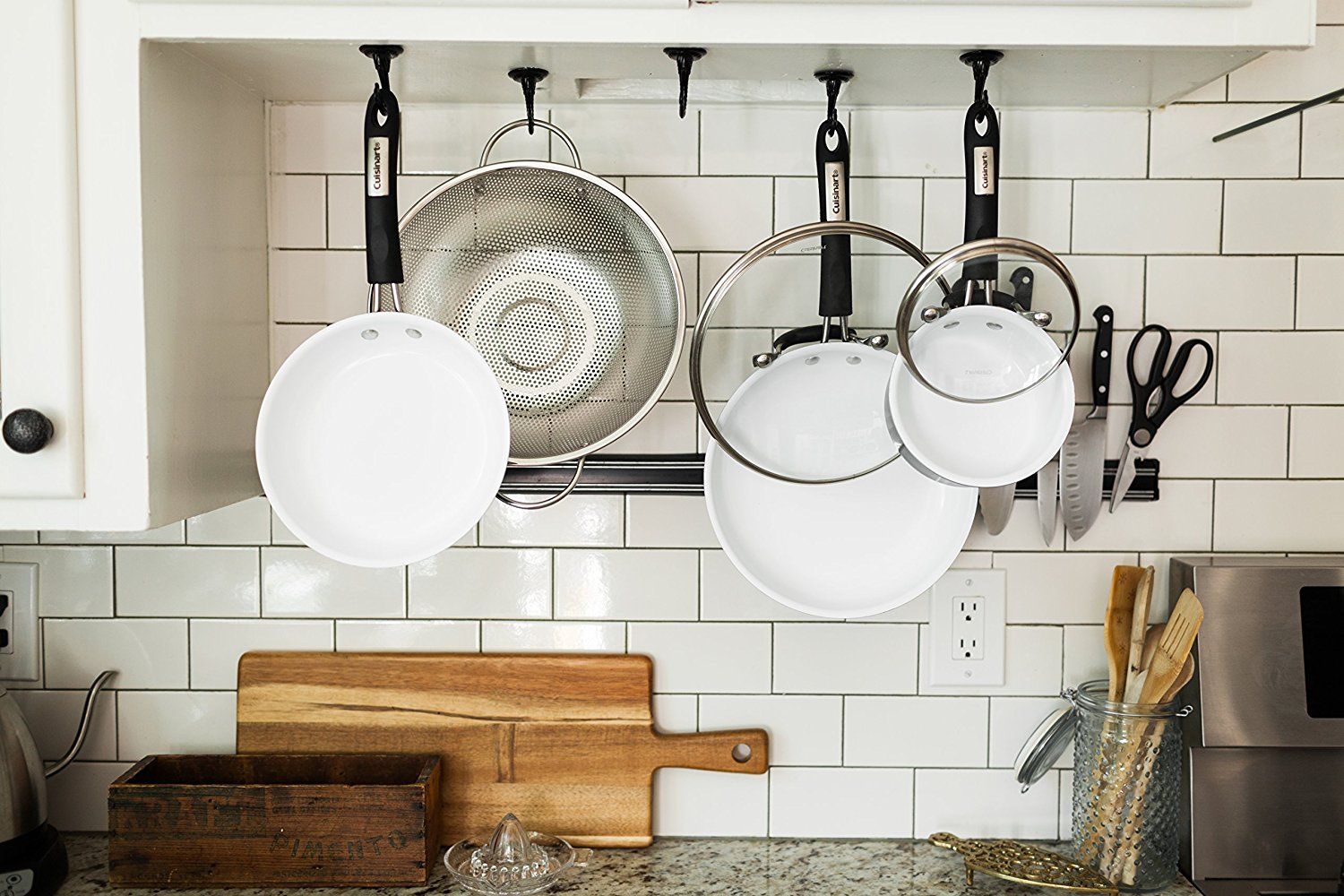

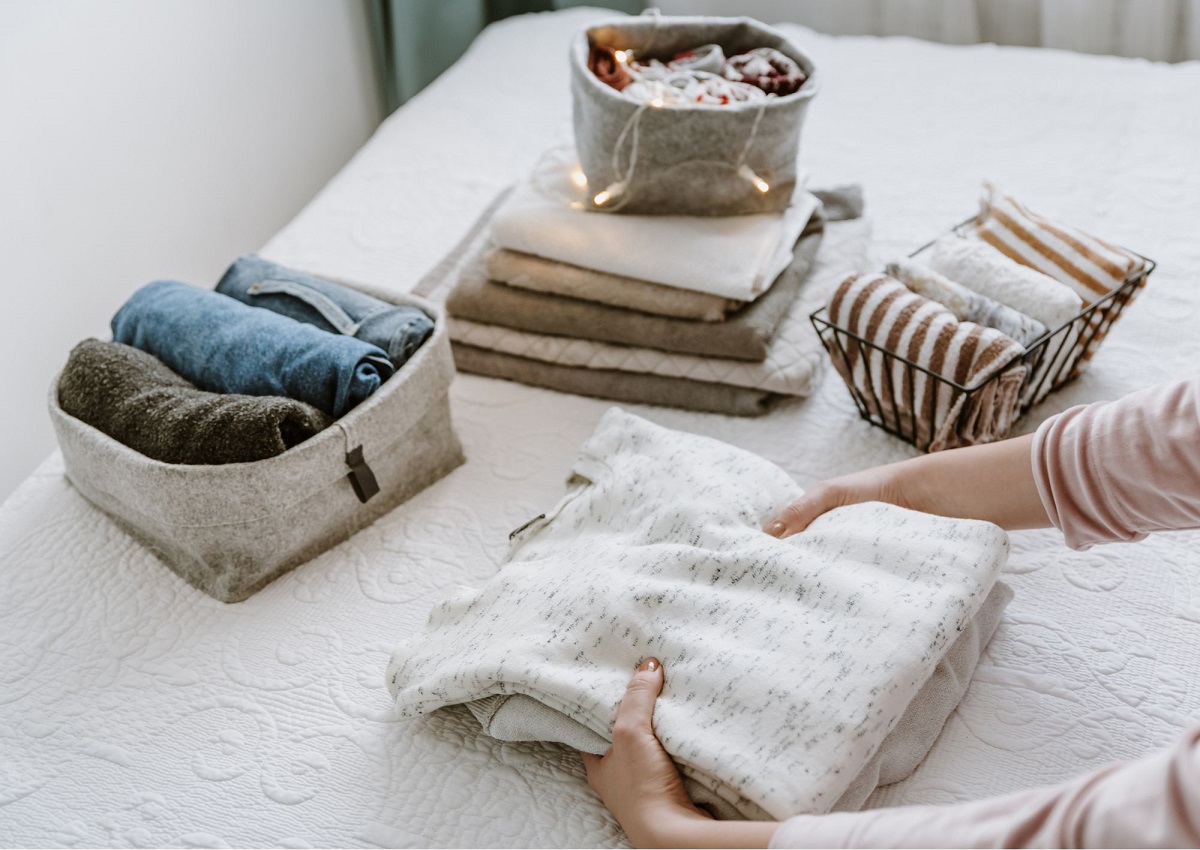
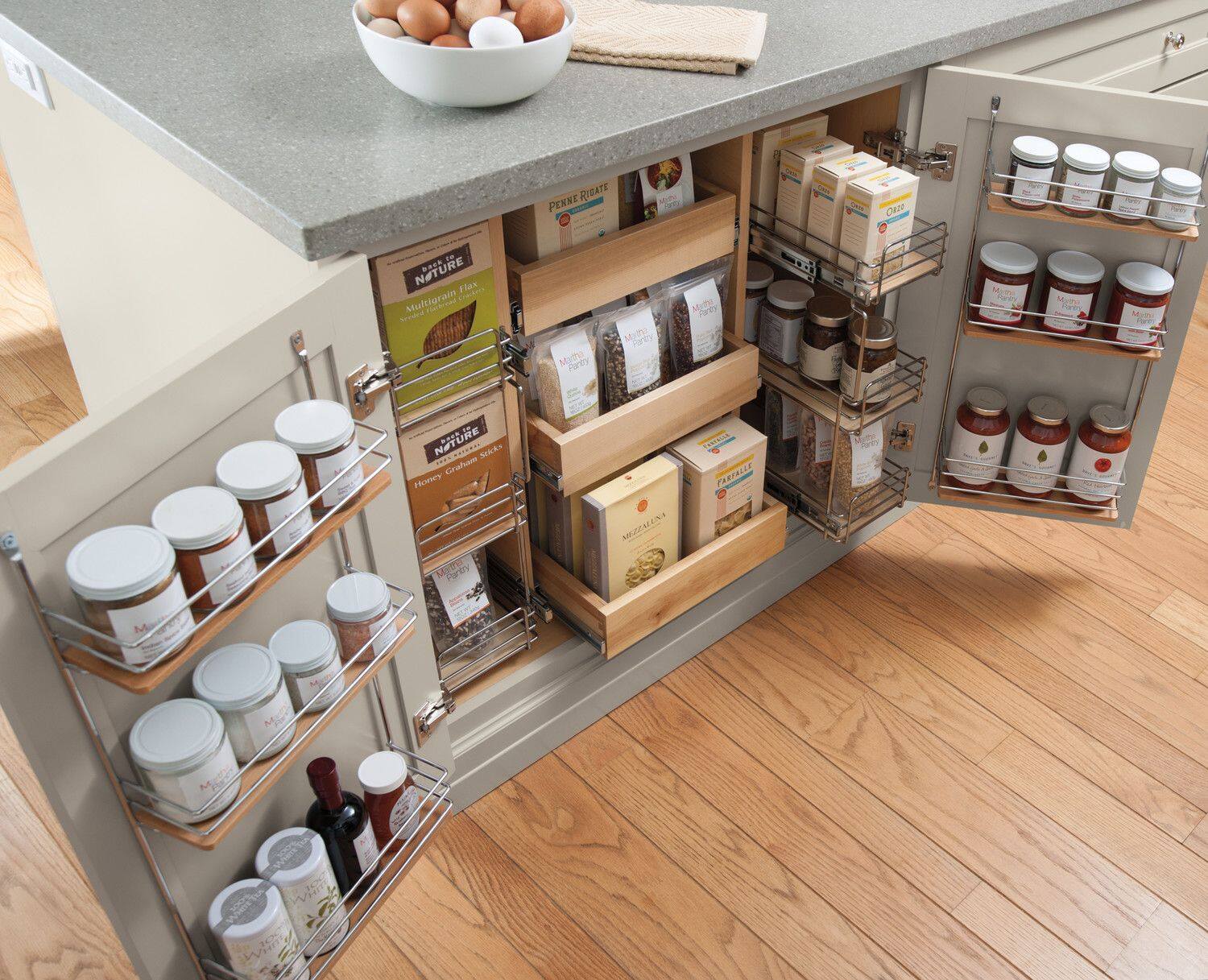

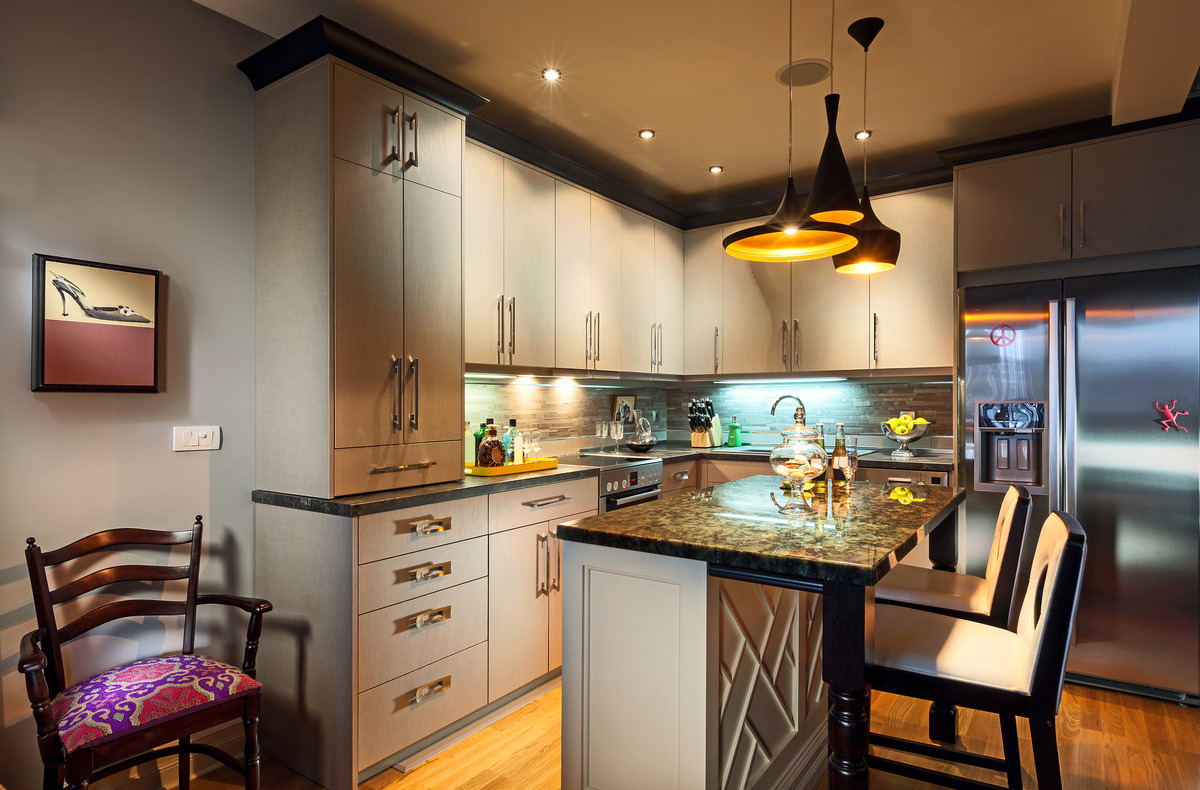



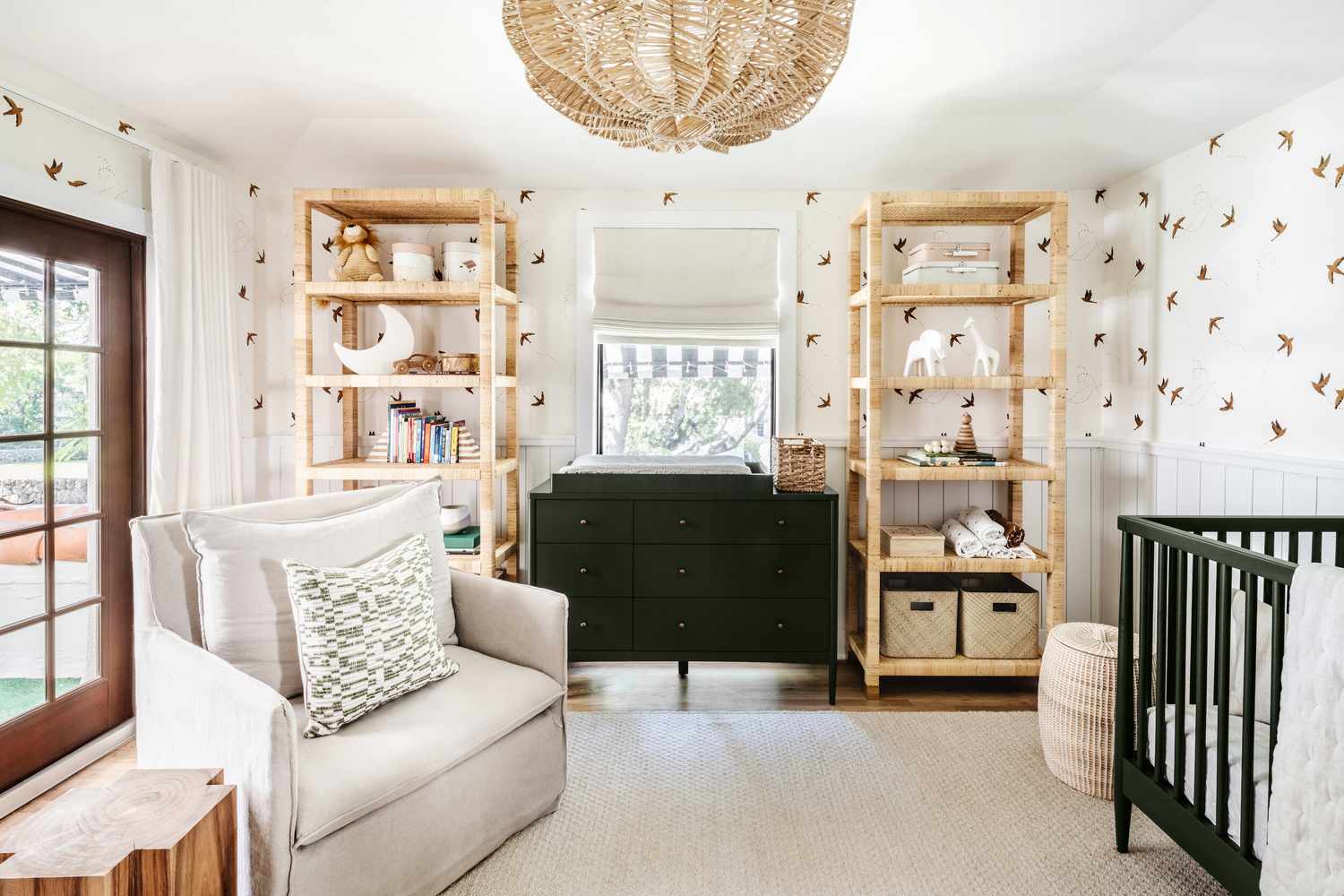

0 thoughts on “How To Declutter A Small Kitchen: 10 Expert-approved Tips”